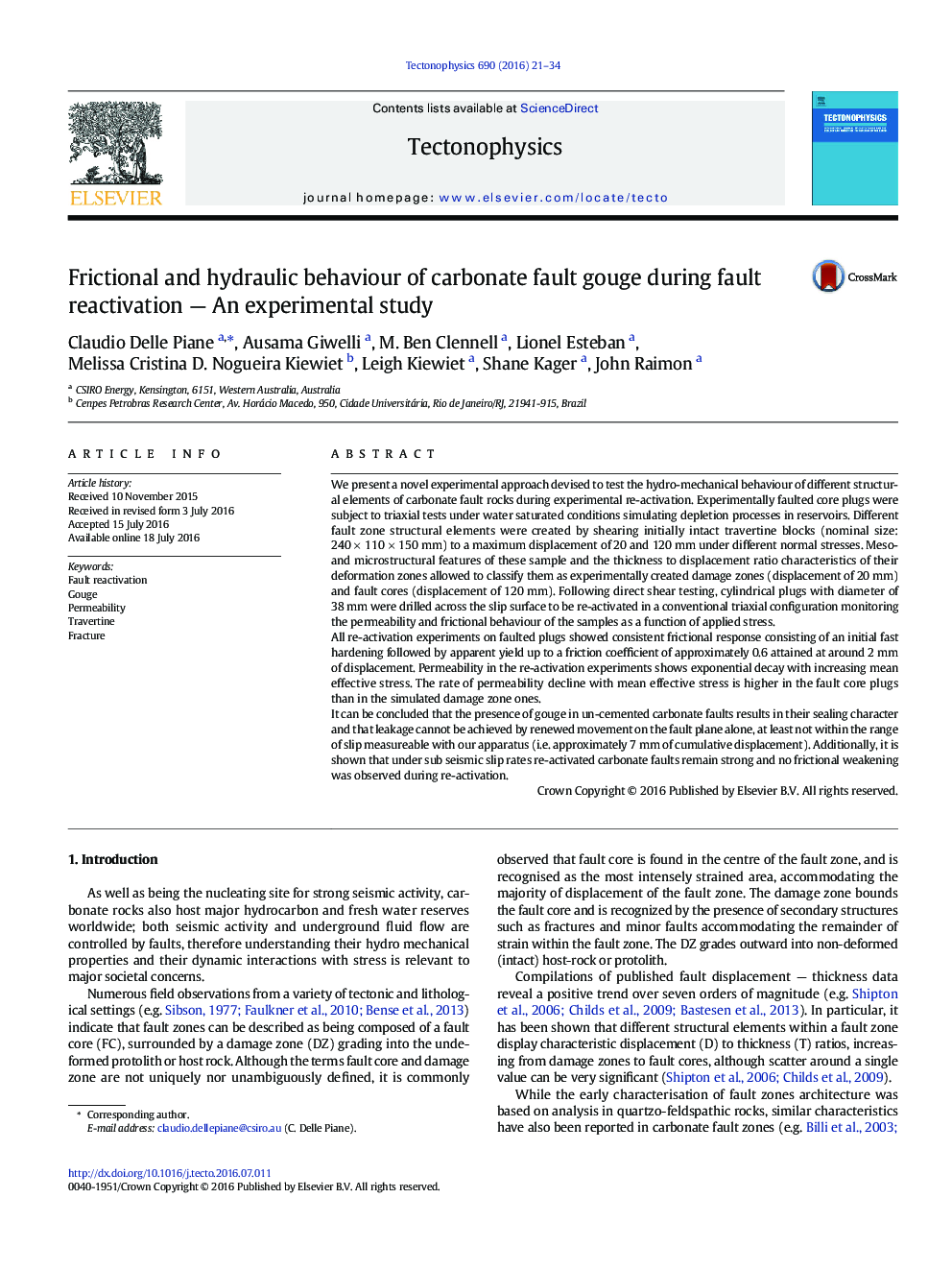| کد مقاله | کد نشریه | سال انتشار | مقاله انگلیسی | نسخه تمام متن |
|---|---|---|---|---|
| 6433279 | 1350548 | 2016 | 14 صفحه PDF | دانلود رایگان |

- Re-activation experiments conducted on faulted carbonate samples;
- Experimentally created damage zones and fault cores;
- Permeability and its stress sensitivity assessed for damage zone and fault core analogues;
- Microstructure of experimental faults consistent with natural fault zones;
- Friction coefficient of the samples is the same during faulting and re activation;
We present a novel experimental approach devised to test the hydro-mechanical behaviour of different structural elements of carbonate fault rocks during experimental re-activation. Experimentally faulted core plugs were subject to triaxial tests under water saturated conditions simulating depletion processes in reservoirs. Different fault zone structural elements were created by shearing initially intact travertine blocks (nominal size: 240Â ÃÂ 110Â ÃÂ 150Â mm) to a maximum displacement of 20 and 120Â mm under different normal stresses. Meso-and microstructural features of these sample and the thickness to displacement ratio characteristics of their deformation zones allowed to classify them as experimentally created damage zones (displacement of 20Â mm) and fault cores (displacement of 120Â mm). Following direct shear testing, cylindrical plugs with diameter of 38Â mm were drilled across the slip surface to be re-activated in a conventional triaxial configuration monitoring the permeability and frictional behaviour of the samples as a function of applied stress.All re-activation experiments on faulted plugs showed consistent frictional response consisting of an initial fast hardening followed by apparent yield up to a friction coefficient of approximately 0.6 attained at around 2Â mm of displacement. Permeability in the re-activation experiments shows exponential decay with increasing mean effective stress. The rate of permeability decline with mean effective stress is higher in the fault core plugs than in the simulated damage zone ones.It can be concluded that the presence of gouge in un-cemented carbonate faults results in their sealing character and that leakage cannot be achieved by renewed movement on the fault plane alone, at least not within the range of slip measureable with our apparatus (i.e. approximately 7Â mm of cumulative displacement). Additionally, it is shown that under sub seismic slip rates re-activated carbonate faults remain strong and no frictional weakening was observed during re-activation.
Journal: Tectonophysics - Volume 690, Part A, 28 October 2016, Pages 21-34